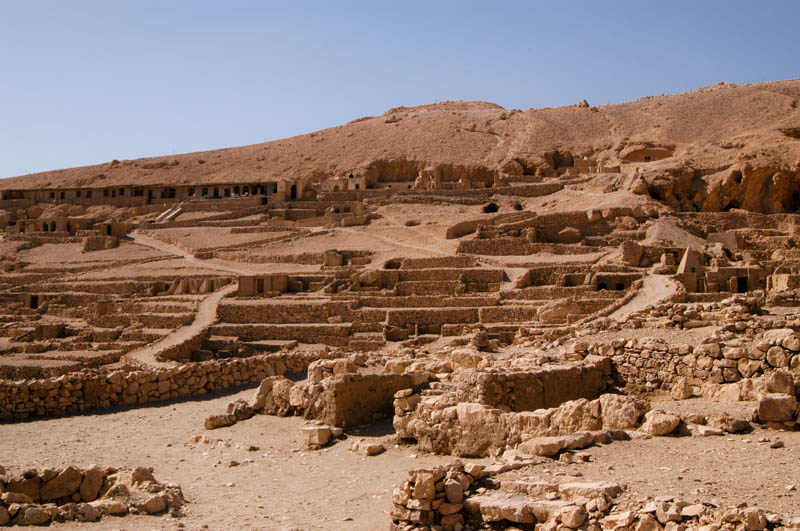The village of the workers housed the masons, artists, and sculptors who worked on the tombs in the Valley of the Kings and the Valley of the Queens. The men working on the tombs were not slaves — they were government workers who were paid well and provided with supplies and food. Their families lived here in the village with them. THese were often hereditary positions, so generation after generation of workers lived here.

The workers stayed at the tombs for 10 days and then returned to their families here in the village. They were not allowed to have contact with the people on the east bank — and were in fact prevented from leaving the village here because they knew the secrets of the tombs.
Narrow streets — some of them only 2-3 feet wide — wind through the mazelike collection of houses. The tiny houses often had stairs to the roof, although it is hard to imagine what this village looked like.
Just up the hill from the small village is a hillside where the workers built their own tombs. These were usually small, but they were beautifully decorated. The artists often did their best work in their own tombs. A little to the north of the village is a small temple, complete with an enclosure wall, kind of a temple in miniature.
We went into a few of the tombs (Peshedu and Sennedjem), but we were told that photographs were not allowed.